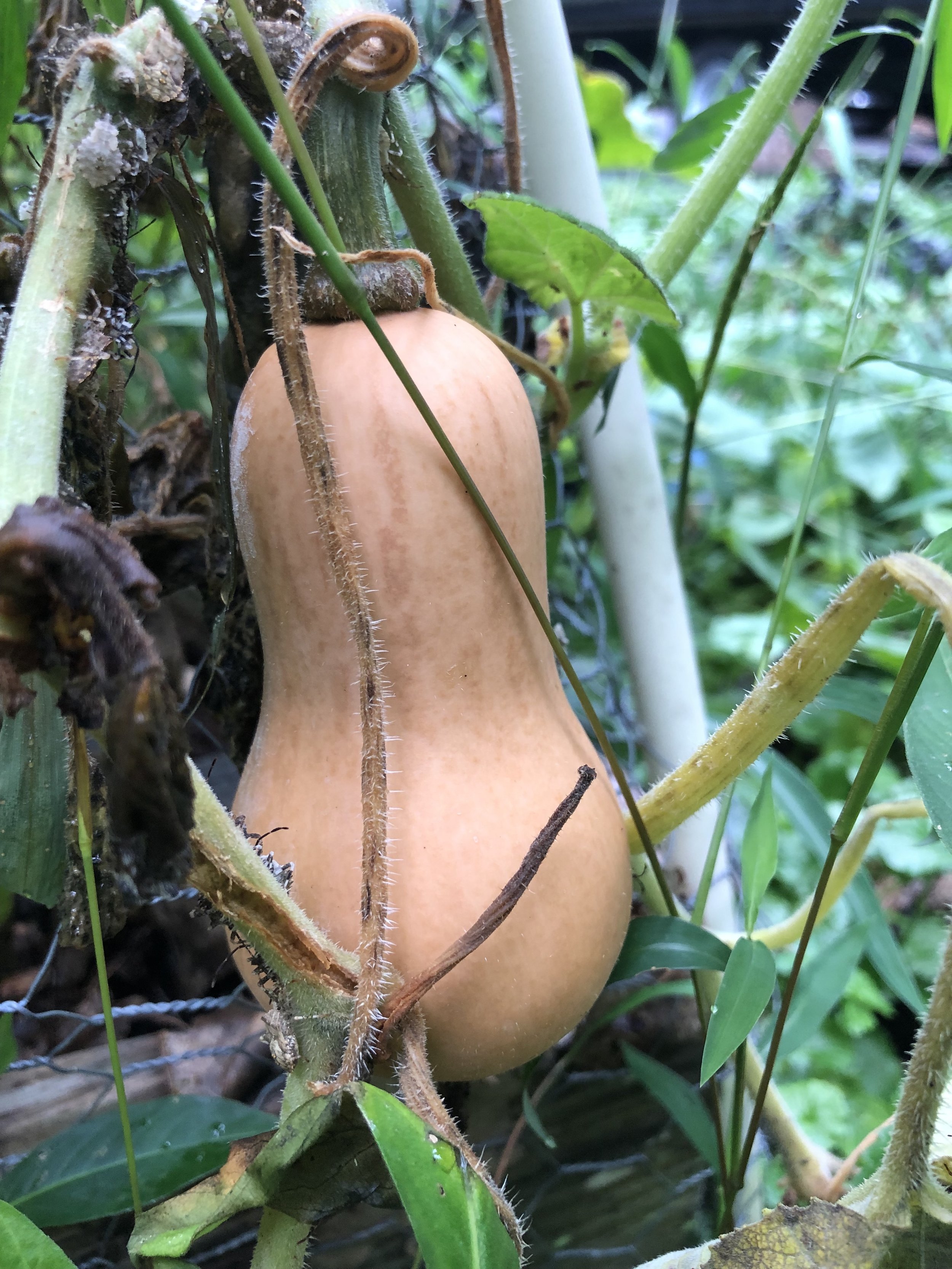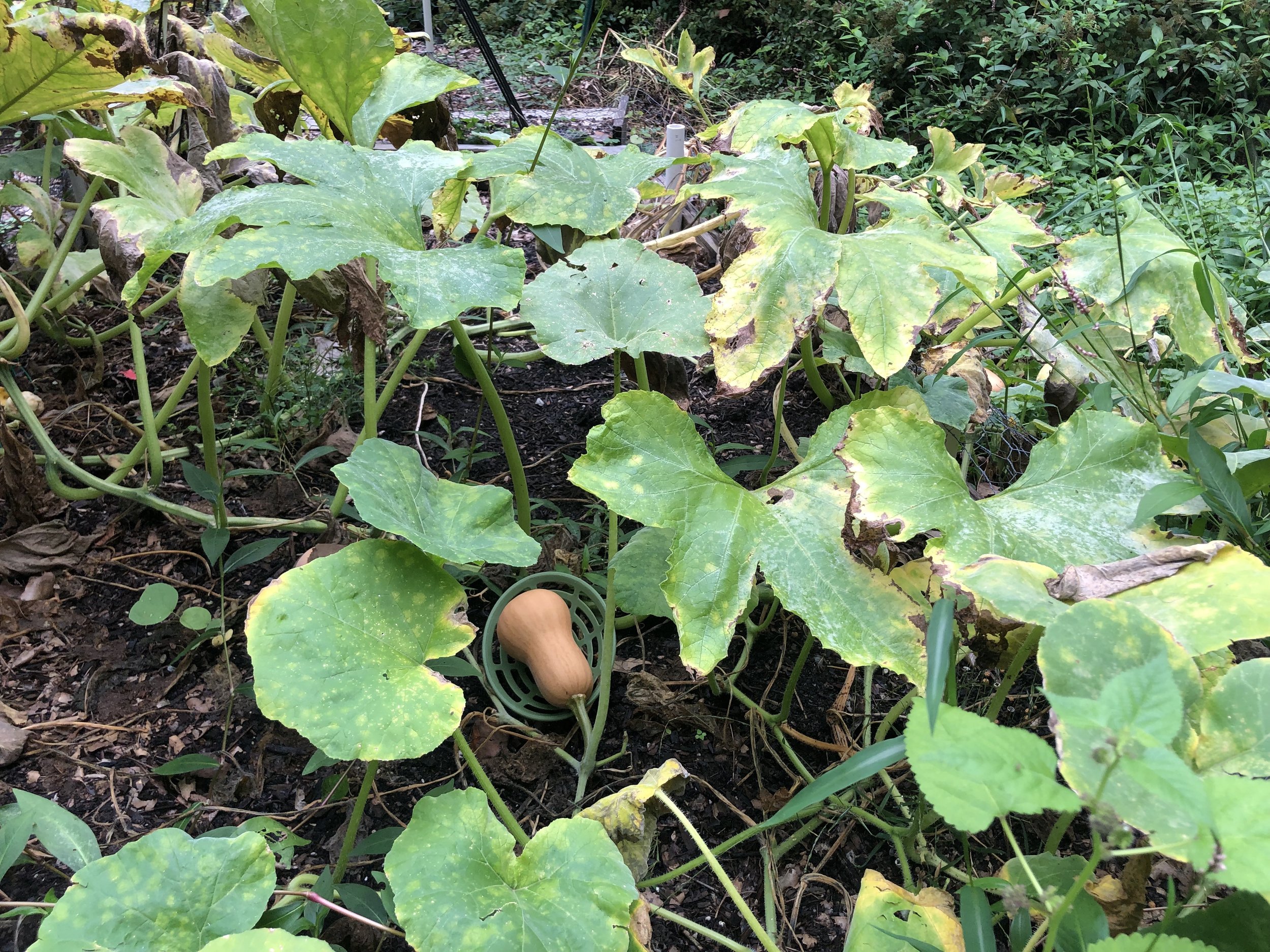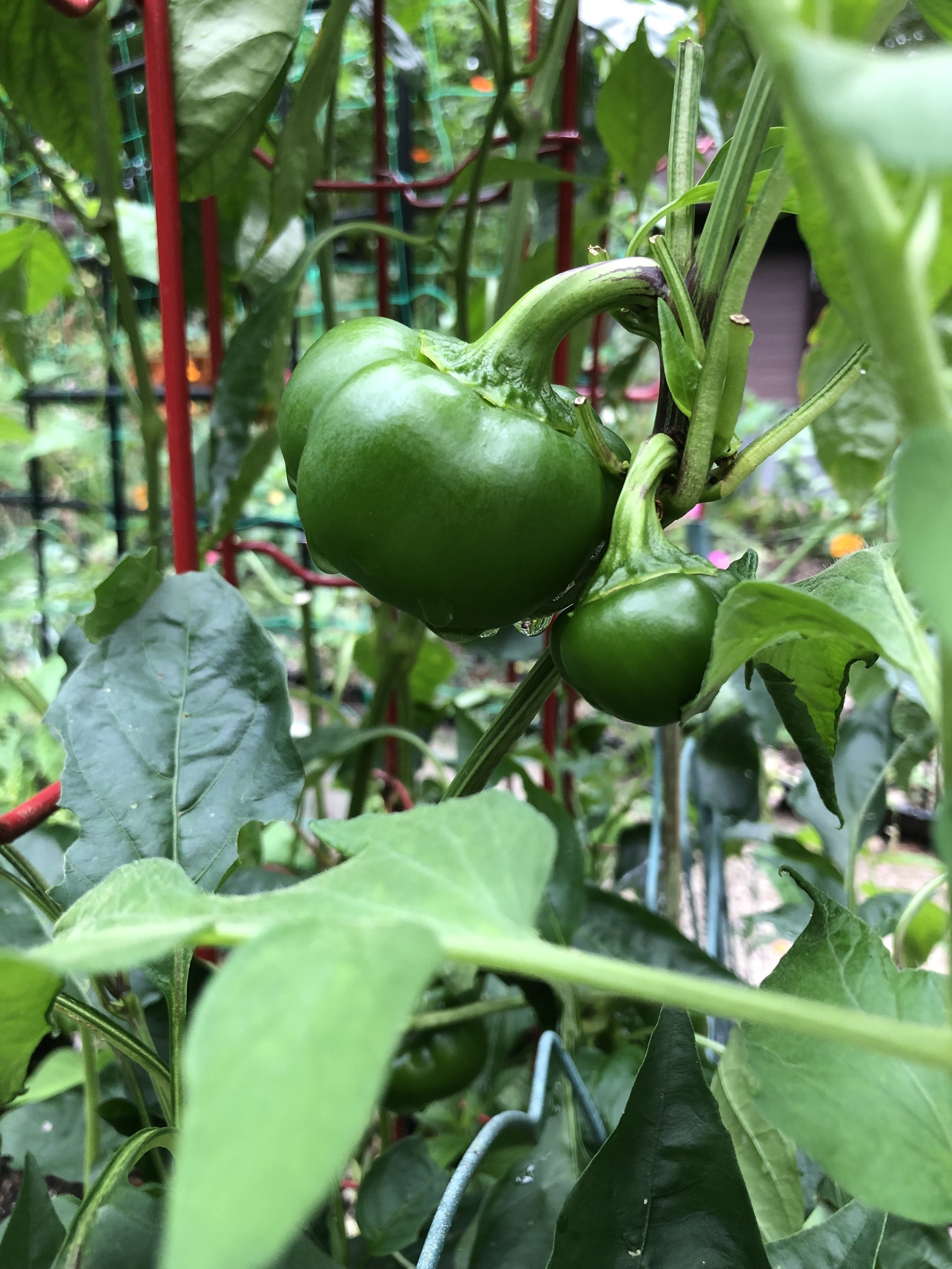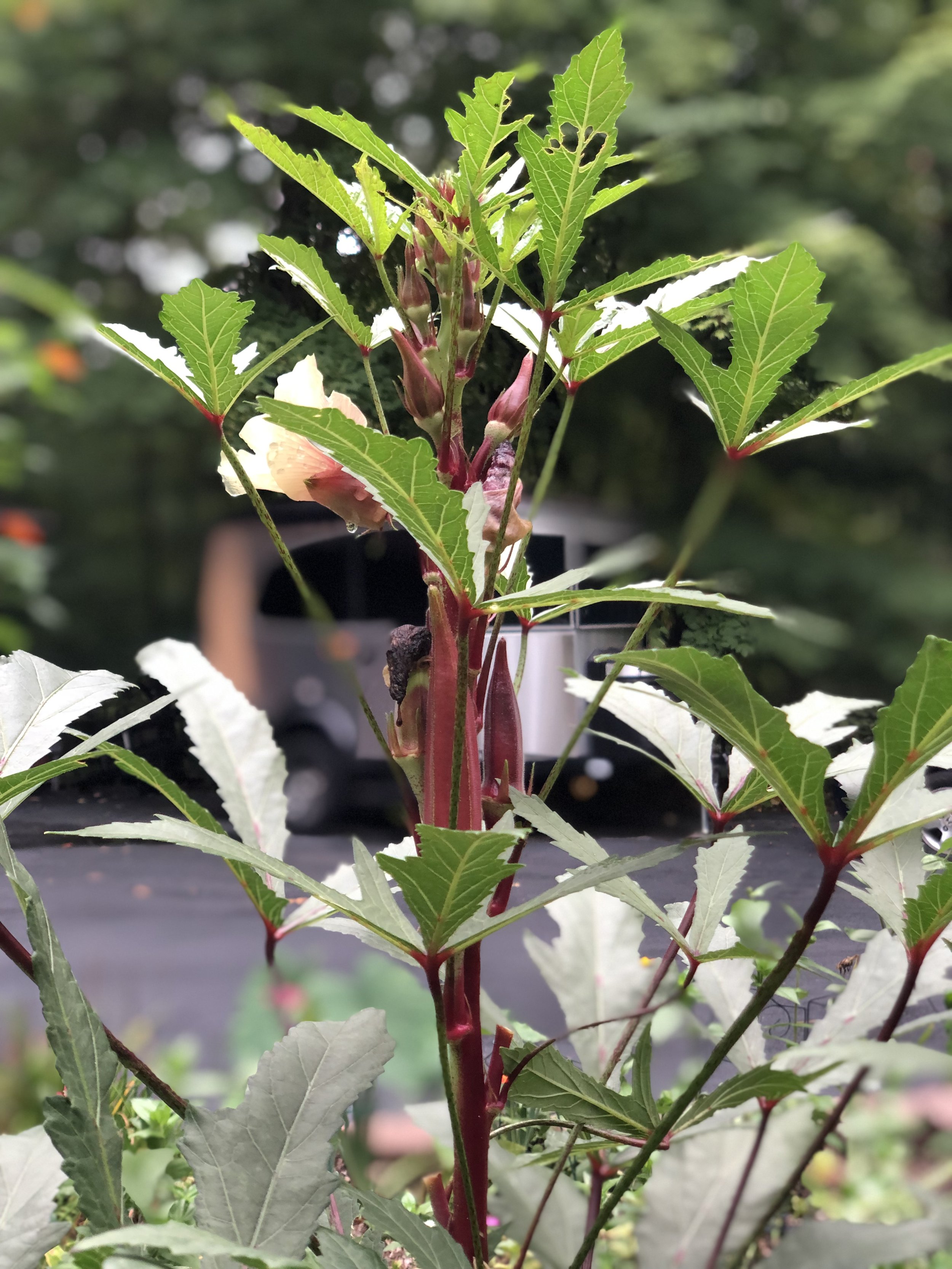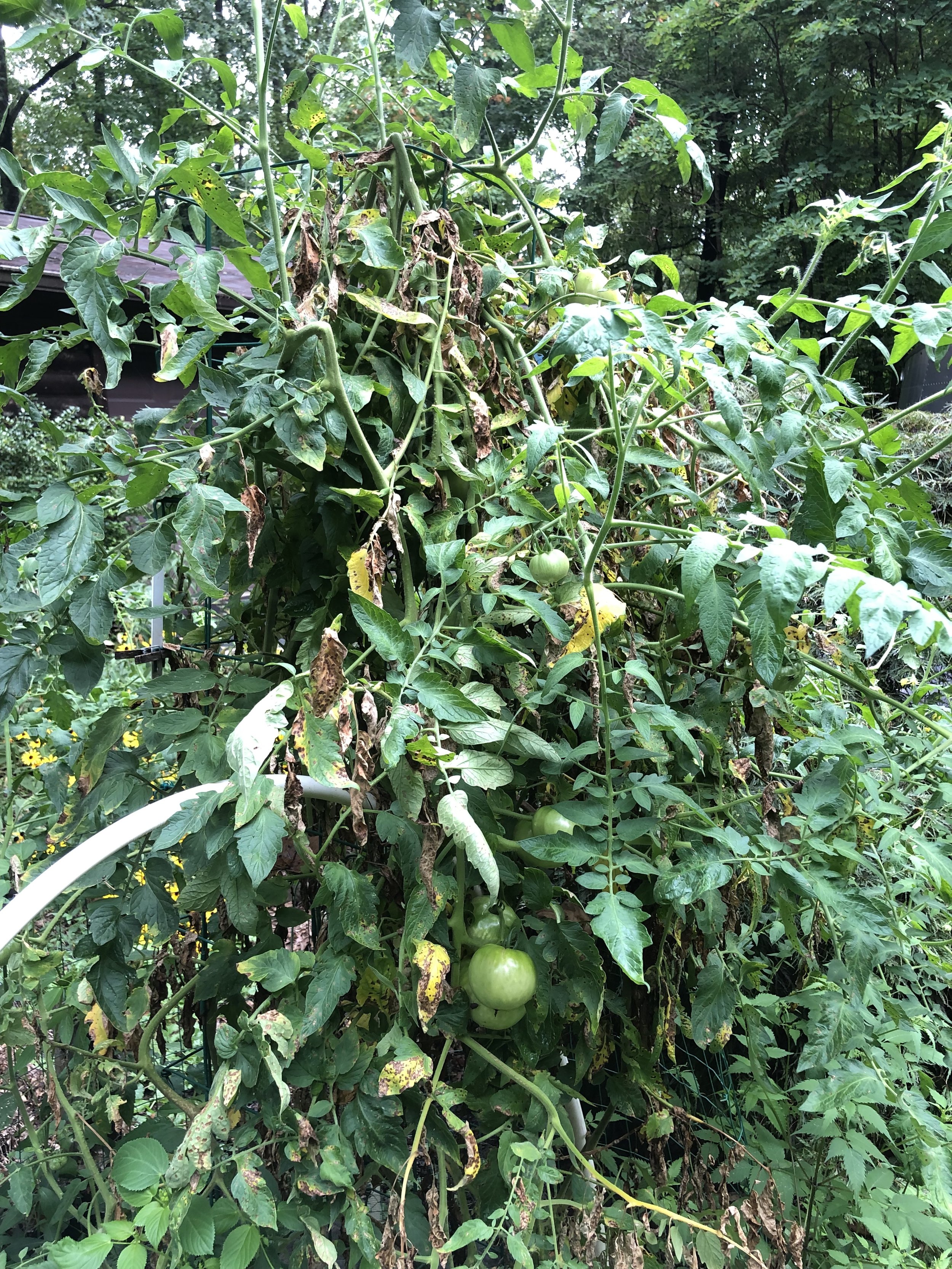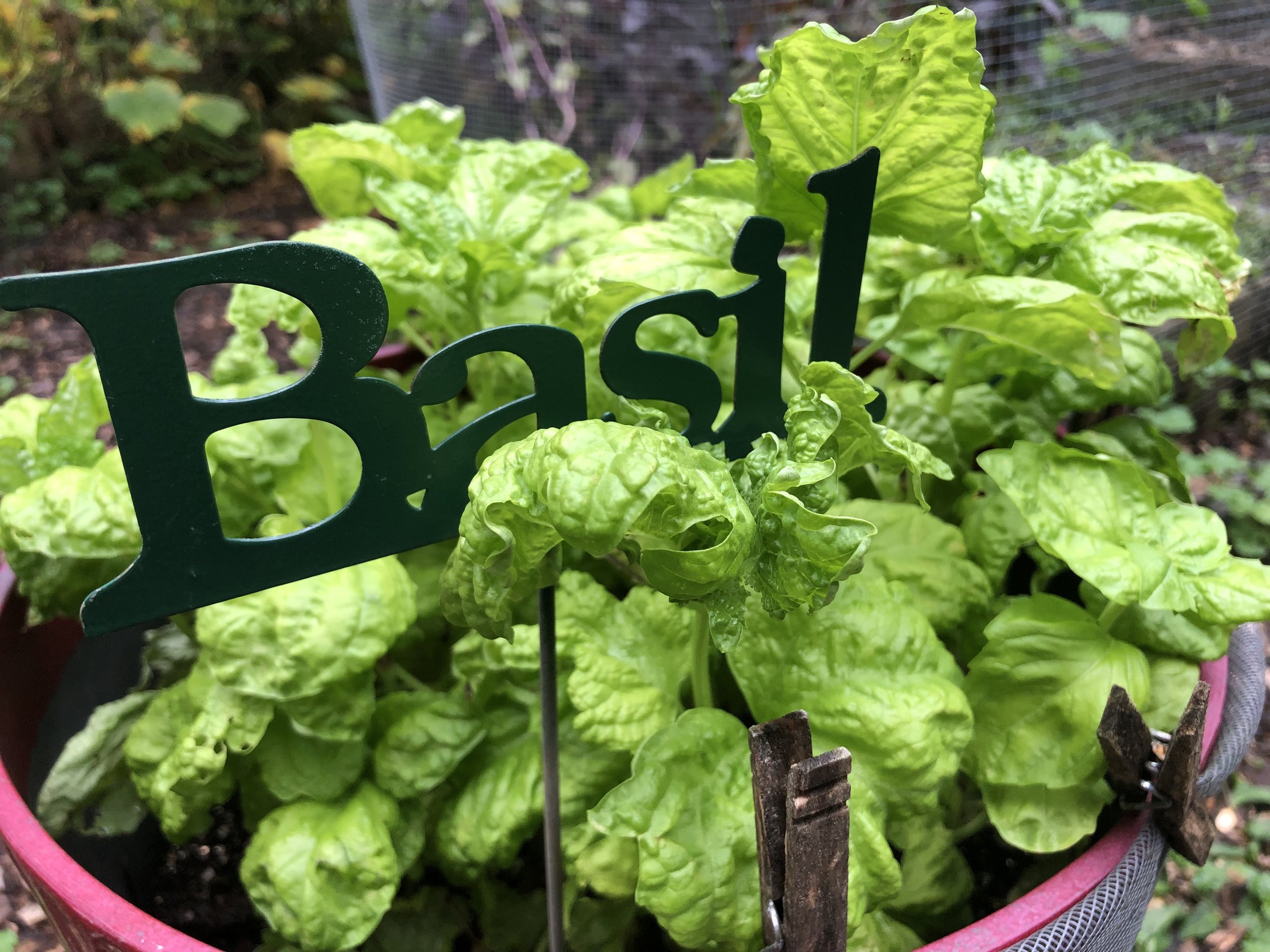The Late Summer Garden
Perhaps many of us can relate to Michael Pollan’s late summer garden in Botany of Desire:
“…As always is the case by the end of the summer, the place was an anarchy of rampant growth and ripe fruit, all of it threatening to burst the geometry of my beds and trellises and paths. The pole beans had climbed clear to the tops of the sunflowers, which stood draped in their bulging green and yellow pods. The pumpkins had trailed halfway across the now-unmowable lawn, and the squash leaves, big as pizzas, threw dark pools of shade in which the lettuces looked extremely happy—as, unfortunately, did the slugs, who were dining on my chard in the squashy shade. The vines of the last potatoes lay flopped over their hills, exhausted.
The garden had come to this, had reached this pitch of green uproar in the few short weeks since May, when I’d set out seedlings in a considered pattern I no longer could discern. The neat, freshly hoed rows had once implied that I was in charge here, the gardener in chief, but clearly this was no longer the case. My order had been overturned as the plants went blithely about their plant destinies.”
I still see color surrounding me in the late summer garden. The zinnias and black eyed susans are still showing their vibrant colors, as well as the striking fuschia of celosias. It makes me happy to see these pops of color amongst the jumble of leaves.
There are successes and failures in the garden that one just has to live with at this point in the season. One squash plant decided to give up the ghost and went the way of the compost pile. Whether it was powdery mildew or squash vine borers, we’ll never really know, though we never did see any borers.
The success of the bean vines gives us the gift of hearty bean meals over the cold winter months. We’ll let them nearly dry on the vine, but before they are totally dried, they can be shelled and frozen, then later cooked in a nice kale and bean soup.
The bees are still busy collecting nectar and spreading pollen, and the deer have regularly come by to make snacks of the hosta leaves - the flowers have still made a beautiful showing, which lessens the sting of the lack of leafy foliage.
We still have basil, peppers, okra, and tomatoes coming ripe to feed us in these late summer days, though by the looks of the leaves, we might not have very much longer until they’ve decided to give up producing their fruits. And we’ll have enough butternut squashes to last us all winter.
The unruly fruits of garden labor are coming to a close, leaving us with good food, fond memories, and thoughts of how we can manage our efforts for the next growing season.








